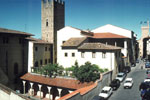 |
LA CASA DEL PETRARCA you can find it in via dell'Orto. Petrarca was born here in 1304, but the current construction was built in the 16th century on the remains of a medieval building. Now it houses the Petrarca Academy of Letters, Arts and Sciences. |
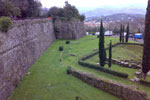 |
LA FORTEZZA MEDICEA it was built in the 16th century by Medici of Florence; it's located at the top of the hill and it offers a wonderful view. Gardens, called "Prato", are all around the Fortress. |
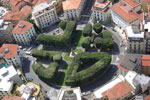 |
PIAZZA GUIDO MONACO it's a circular square, with a diameter of 100 m, which dates back to 1800, located at the intersection of three important roads: via Guido Monaco (1870), via Petrarca and Via Roma. At the center of the square stands the monument, work by Salvini Salvino (1882), to Guido Monaco (or Guido D'Arezzo), the creator of the modern musical notation and tetagramma. |
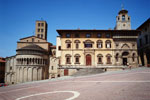 |
PALAZZO DELLA FRATERNITA DEI LAICI it's in piazza Grande. It was built in three different epochs, but the result is wonderful. The lowest part of the building is Gothic (14th century), but it was completed in Renaissance style by Bernardo Rossellino in the 15th century. The bell-gable was designed by Giorgio Vasari (16th century), and it houses one of the oldest working clocks (Felice da Fossato, 1552) that indicates hours, days and the phases of the moon |
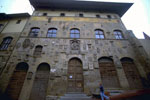 |
PALAZZO DEL PRETORIO it's located in via dei Pileati, and it was built between the 14th and the 15th century. On its facade there are a lot of coats of arms of the Podestà, Capitani and Florentine Commissari who governed the city. Now it houses the Arezzo library. |
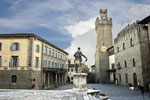 |
PALAZZO DEI PRIORI: it's now the seat of the offices of the town council, and it's located in piazza della Libertà. It was built in the 14th century and it has got a characteristic tower where you can find frescoes by Parri di Spinello and Teofilo Torri; you can also find paintings by Giorgio Vasari. |
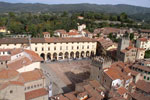 |
PIAZZA GRANDE it's the oldest square of the city and it's one of the most beautiful ones in Italy. The square boasts buildings built in a lot of epochs: on the southeast side there are medieval buildings (Palazzo Tofani, Torre dei Làppoli), on the north side there is Vasari's Palazzo delle Logge, on the west side there are the parish church of Santa Maria, the palazzo del Tribunale and the palazzo della Fraternita dei Laici. |
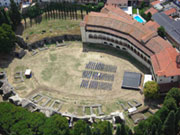 |
ANFITEATRO ROMANO: it's between via Crispi and via Margaritone. It was built in the 1st century with blocks of sandstone, bricks and marble and it contained about 8,000 spectators, but now you can see only its rests. In the 16th century the Monastery of S. Bernardo was built on the remains of the south semi-circle, here the Fraternita dei Laici founded the Archaeological Museum in 1822. |












